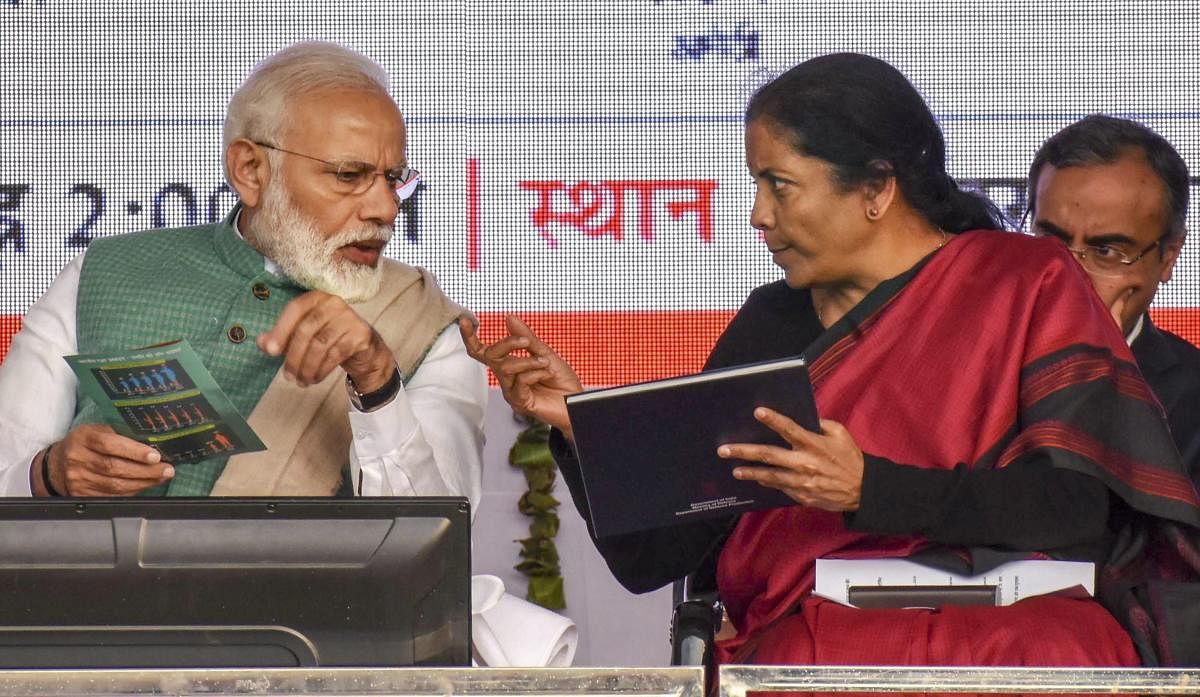
Prime Minister Narendra Modi with Union Finance Minister Nirmala Sitharaman
Credit: PTI File Photo
Union Finance Minister Nirmala Sitharaman will be presenting the Interim Budget for the fiscal year 2024-25 on February 1. Sitharaman has been at the helm of the Finance Ministry since the ruling NDA led by the BJP won its second term to the Lok Sabha in 2019. Before Sitharaman, Arun Jaitley headed the ministry from 2014.
The past 10 years under these two finance ministers have seen some major changes in economy including the much-debated demonetisation in November, 2016 and the implementation of the Goods and Services Tax (GST) in the year next to that.
Economy has been a subject of contention for the Narendra Modi government with critics consistently targeting the ruling dispensation for its economic policies.
Here we look at the GDP numbers of the past 10 years and find out how exactly the Indian economy has fared under the current government. We will also see how this data matches up to the UPA era.
One of the major reasons of Modi's rise to power was BJP's successful campaign where they were able to convince voters that the economy in the later part of the Manmohan Singh era was struggling badly.
In 2011, 2012 and 2013, the leading years to the 2014 Lok Sabha polls, Indian GDP figures could not touch 7 per cent, a mark that had been consistently breached since 2003 - except for 2008.
Modi government returned with GDP figures of 7.4, 8 and 8.3 in its first three years. The double jolt of demonetisation and GST meant that the country grew at 6.8 and 6.5 percent in 2017 and 2018 respectively.
In 2019, the year when the government was given its second term with an even bigger mandate, GDP figures were at 3.9, joint lowest since 1992.
The pandemic-induced lockdown wreaked further havoc on the economy with the economy witnessing a historic contraction of 5.8 per cent.
However, the country bounced back with 2021 seeing 9.1 per cent growth. The last two years have seen the economy grow by 7.2 and 6.3 per cent.
Currently, India is among the fastest growing economies in the world.
Comparison with Manmohan era
In the UPA years from 2004 to 2013, Indian economy saw a massive boom, growing at a rate of 7.74 per cent per year. In Modi's 10 years, the GDP has grown at 5.77 per cent per year. While the UPA era weathered a global financial crisis in 2008-09, the current government had to combat a once-in-a-century pandemic.
The numbers show that, on average, the UPA government was two percentage points better than the current dispensation in terms of real GDP growth.
However things become interesting when the same numbers are put in perspective with how the world economy has done in the era of these two governments.
World economy grew at just around 4 per cent from 2004-13 while it rose just around 3 per cent from 2014-23. So, when put in this context, the Indian economy under both Modi and Singh has grown less than just double of the world economy. However, there is no comparison between the overall real GDP figures between the two governments.
Disclaimer: All the data mentioned here has been taken from the official International Monetary Fund website. The GDP mentioned is real GDP growth with inflation taken into account to reach the figures.